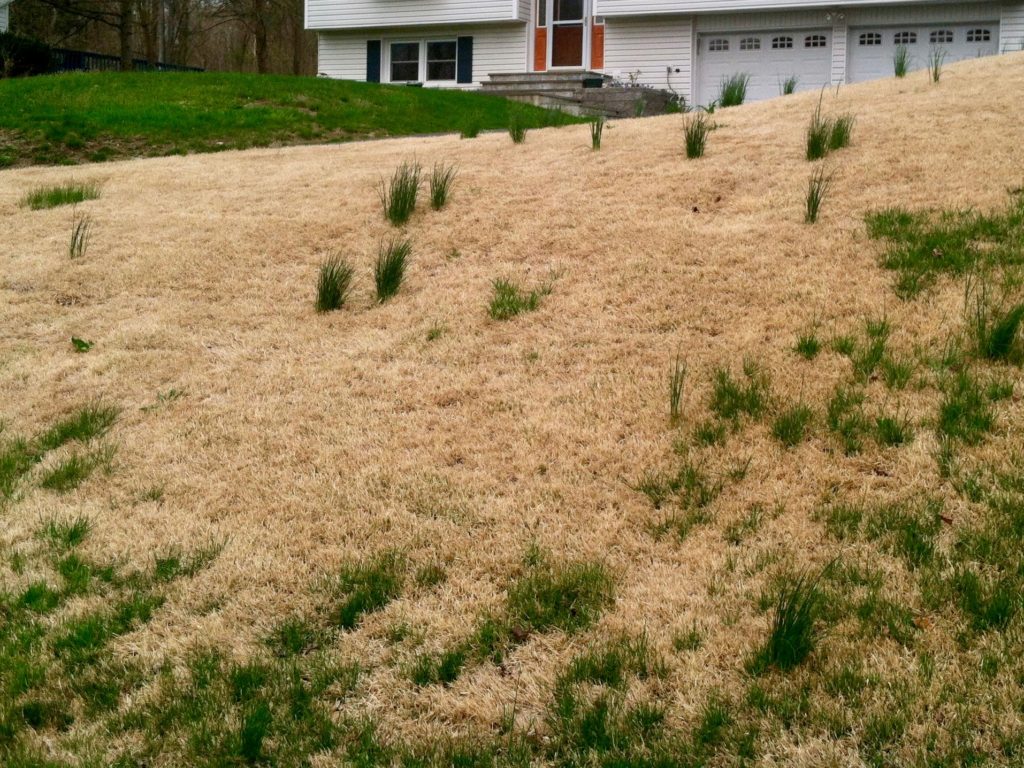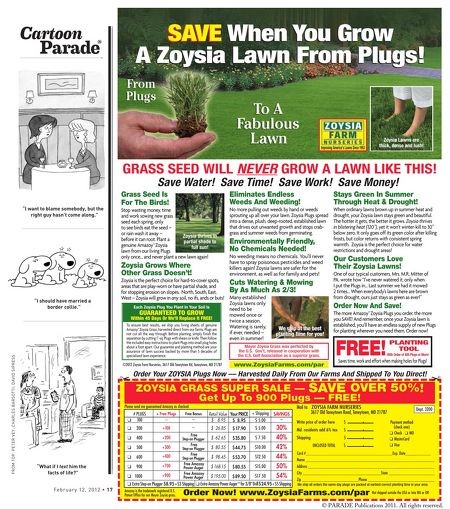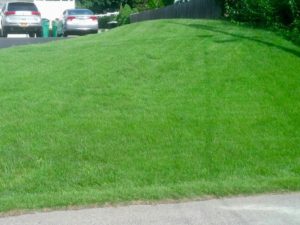
 What a weird sight! This lawn is beyond brown but has something green growing in the middle of it!
What a weird sight! This lawn is beyond brown but has something green growing in the middle of it!
This is Zoysia; of if you’re into calling grasses by their Latin names, Zoysia japonica (impress your family and friends with that nugget of information). Where does it come from and how did it get there?
Your father’s Sunday newspaper.
No, really. Back in the day when everyone read the Sunday newspaper there was an insert called Parade Magazine. During the spring months, you could find this advertisement on the back cover for Miracle Grass:

Sounds too good to be true, doesn’t it? This is an example of vegetative propagation, a means of reproducing grasses without going through sexual reproduction (seed). The company would go out into its fields and cut innumerable plugs of Zoysia and ship them to their customers. The customers would use the handy-dandy plugging tool to insert the plugs into their lawns.
What they do not tell you is that Zoysia japonica is a warm season turfgrass like Bermudagrass or St. Augustinegrass. But unlike those two species, Zoysia can tolerate very cold winters so it will survive pretty good in our service area.
However, as the photograph will attest, Zoysia has a very long period of dormancy. It is the very last grass to green up in the spring and the very first grass to go dormant in the fall. And contrary to the claim in the advertisement, weeds will encroach Zoysia when they get the opportunity; the weed growing in the photograph is Wild Garlic.

Here’s the same lawn in a photograph taken in midsummer. Zoysia spreads vigorously via vegetative structure called stolons that run along the surface of the soil. As you can see, when its actively growing during the hot weather, Zoysia makes an attractive, dense and deep green turfgrass.
Find more technical tips in our Technical Resource Library in the NALP Member Center.

